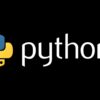Just like most tech contractions, DevOps is a term that is often misunderstood and used incorrectly. DevOps – a blend of ‘development’ and ‘operations’ – is the combination of certain specific practices and tools created as an upgrade to traditional software development processes.
Traditionally, software development featured packages of software built and figuratively shipped down from developer’s shelves to the operational staff who were responsible for the build’s testing and maintenance. Without the assistance of developers, the operations team would have to identify and address bugs after production usage of the application had started.
In an attempt to fill the gap, development and operations teams were merged together, thereby creating an effective channel of communication, with both teams bearing the collective responsibility of an application’s development and operation.
The main goal of DevOps is to assist organizations to improve on old development processes by:
- Increasing its potential to deliver applications and services quicker and satisfy customers’ needs with high-quality standards.
- Improving reliability and quality of application updates for end-users with practices like continuous integration and continuous delivery.
- Improving efficiency with developers and operations teams cooperating closely and sharing responsibilities. This helps in building a competitive advantage in the tech market.
DevOps operations depend largely on effective tools that assist teams in quickly and efficiently deploying novel innovations. These tools are employed in automating certain manual tasks, assisting in handling large and complex environments as well as giving engineers a handle on all development processes. Typically, DevOps process consists of the following phases:
Planning
In traditional software development, this is equivalent to the requirement gathering phase. Planning in DevOps includes everything that happens before the developers write a single line of code. This phase is key in the whole DevOps pipeline as it focuses squarely on customers’ needs and experiences with previous applications. Essential feedback from relevant stakeholders is also integrated into earlier stages of planning.
Building
In DevOps and programming generally, the planning and coding phases are interdependent of each other. In traditional development environments, testing software builds is an individual phase carried out by the operations team after the application has been completely integrated.
However, improving on this practice, the DevOps approach carries out and integrates automated testing across all stages of the software development process. Employing the ‘shift left’ approach, developers run their own quality assurance (QA) scripts early so as to identify and correct errors early.
Continuous Integration
Continuous integration is central to the DevOps environment. It basically involves frequently merging new codes and changes made by different developers into a central repository. At least once a day, the contributions of team members are added to the source code version control system. Automated tools are then employed in retrieving the code as well as preparing the build and carrying out tests before it’s moved to the relevant staging environment or repository.
Deployment
Continuous deployment focused on implementing solutions to end user-facing production environments, verifying the software’s quality and ensuring continuous support and monitoring after its release.
Utilizing the ‘infrastructure as code’ concept, developers manage and monitor both the test and production environments, ensuring that the software’s being tested in an environment with identical configuration to the production environment. Hence, what works in testing is sure to work in production.
Continuous Feedback
For DevOps startups, capitalizing on automated processes is necessary for acquiring feedback on customers’ experiences and defining metrics for evaluating the software’s performance.
This information gives the DevOps team a clear idea of improvements that should be made to the application and also serves as a key input to the planning phase.
The ever-competitive nature of the tech market has led to organizations now relying on solutions like JFrog pipelines in automating DevOps processes and phases including, but not limited to continuous integration(CI), continuous delivery(CD) and infrastructure. Some companies that have seen success in their use of DevOps transformations are:
Amazon
Switching from physical servers to the Amazon Web Service (AWS) cloud, Amazon established itself as a key participant in the DevOps transformation. Using an internal system called Apollo to manage CD processes, Amazon was able to deploy new software to production servers an average of every 11.6 seconds. Aside from an increased frequency of deployment, Amazon’s implementation of a new load balancer ensured the quality of service by limiting outages to just once each 100,000 deployments
Netflix
Another Fortune 500m company, Netflix operates a cloud-based infrastructure with hundreds of microservers aimed at servicing its over 100 million users. Developers easily write codes that are deployable as web images and integrated into the Netflix’s infrastructure as the images are updated.
Other companies thriving through the DevOps transformation are Etsy, NASA, Target, Hertz, HP and many more.





